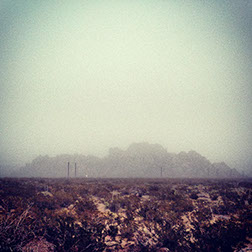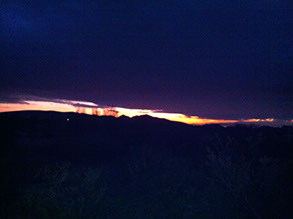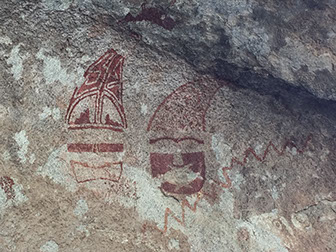On February 19, 2015 the “working group” put together by Texas Park & Wildlife Department, TPWD, met for the second meeting in a series of six to review Hueco Tanks State Park & Historic Site’s, HTSP&HS, Public Use Plan, PUP, to make suggestions for the future use of Hueco Tanks. February’s topic of Natural and Cultural Resource management in HTSP&HS raised some passionate conversation. (For information about the first meeting and the events that lead up to these meetings, please see http://www.melissaistrong.com/hueco-tanks-pup-under-review.html)
Since Hueco Tanks and the surrounding cliffs provided shelter and water in a desert environment a significant cultural footprint was left in the Hueco Valley. Because of the Native American history & rock art in Hueco Tanks it is a very important place to the Tigua (Ysleta Del Sur Pueblo), Pueblo of Isleta, the Kiowa, the Mescalero Apache, the Comanche, the Kalpulli Tonal Teocalli, and the Kalpulli Tlateca. Non Native American history begins in 1598 with Spanish settlers and continues into the 1800s with ranchers, mail stations and stagecoach stops. Climbing history also has a footprint in Hueco beginning with the Native Americans who where were the first climbers in Hueco and the forefathers to climbers who began to show up in the 1950’s with Royal Robins and in the 1970’s with Mike Head and Dave Head.
Because so many people have such strong historic connections with Hueco the users today are zealous. Some of the organizations participating in TPWD’s “working group” optimistically see all users harmoniously enjoying the fruits of Hueco Tanks while others feel as though Hueco should be restricted to cultural appreciation only—an outdoor museum so to speak with no room for recreation. Voicing a negative opinion against climbing in Hueco, some members of the working group claimed during the February meeting that climbing and chalk is harming Hueco Tanks’ cultural resources including the rock itself.
On a positive note, it was mentioned that the Public Use Plan has limited social trails, limited graffiti and protected all aquatic life including the Rotifers (“Rotifers--are microscopic aquic animals of the phylum Rotifera. Rotifers can be found in many freshwater environments and in moist soil,” http://www.ucmp.berkeley.edu/phyla/rotifera/rotifera.html). In her discussion on Rotifers, Liz Walsh from the department of biosciences at The University of Texas at El Paso, states that, “rock climbers seem to have been behaving responsibly.”
Climber/recreational representatives have spoken up since rock climbing does not harm rocks and climbers have gone to great lengths to daily protect cultural and natural resources. However, there is a general feeling is that opponents to rock climbing are monopolizing these meetings. This sentiment has been conveyed to the TPWD director, Christopher Beckcom, in hopes that the working group will be able to fulfill it’s goal of providing a future solution and not wasting time and taxpayers dollars. “TPWD will certainly have its hands full keeping some of the meeting participants on track” states Curt Shannon of the Access Fund. From some of the climbing reps there is a feeling of frustration, wondering if preconceived notions are limiting what some people at the meetings are actually hearing and understanding. A few of the outdoor recreation reps are beginning to wonder if the naysayers are even willing to attempt to listen to both sides or if they can give credence to and process any other argument but their own. The optimistic plan is to continue forward with these meetings hoping that time, patience, forbearance and intelligent rhetoric will prevail.
The next working group meeting will take place on March 23rd at Hueco Tanks in form of a backcountry tour. The meeting will “focus on the park tour” states Chris Beckcom. In an email Beckcom informs the working group that: “We will still welcome any of the tribes to briefly talk of their connection to the park. In our April meeting we will address Native American interests in the park, insuring that any presentations and information given have the time and attention of the Group.” A public meeting will follow the tour on the evening of March 23rd at 7-8:45 pm at the El Paso Community College’s Administrative Services Center auditorium—the facility is located at 9050 Viscount Blvd, El Paso. The auditorium is in Building “A”.
The chalk debate—it is hard to believe that something digestible can hurt rock. After this point was presented in the February meeting we did a little reach on our own--Wagon Wheel’s representative William Andrew Klier contacted a third party chemist on their opinion of chalk. Here are the findings by Trevor A Feagin PhD and Jennifer M. Heemstra PhD who both work in the chemistry department at the University of Utah. This information will hopefully be presented and heard at the next meeting. Regardless of the benign qualities of chalk it is always important in any climbing area to keep chalk use in check, being careful not to spill chalk and erasing any tick marks after using.
March 8, 2015
To whom it may concern,
The principle component of athletic chalk used for rock climbing is magnesium carbonate (MgCO3), a naturally occurring mineral. MgCO3 is used in many commercial products such as fire proofing, cosmetics, toothpaste, laxatives, to protect table salt from humidity, athletic chalk, and as a filler for paint. As seen by these uses, MgCO3 is nontoxic, so it is safe for human consumption and topical applications. Natural deposits of MgCO3 are found throughout the world and are produced through mining of the mineral magnesite. This naturally occurring mineral is ground into a fine powder to produce athletic chalk. Due to its nontoxic nature, MgCO3 has little to no known environmental impact in the quantities used for climbing. Additionally, MgCO3 is stable in all but the most extreme conditions. This means that it does not undergo chemical reactions and remains in a harmless state. In extremely acidic conditions (battery acid) it can react to form soluble salts, and under high temperature (900 °C propane torch) it can decompose to MgO. However, this is irrelevant since these extreme conditions are not found in climbing environments.
While there are many different types of athletics chalk, the primary ingredient is always MgCO3. Other common components found in athletic chalk include calcium carbonate (CaCO3, also used in blackboard chalk and antacids) and the drying agent silica (SiO2, also used as a food additive).
Paint is defined as any liquid, liquefiable (can be made a liquid) or mastic (resin compound) mixture that upon application coverts to a solid film. Paint generally consists of several components including pigment, solvent (liquid), binder and filler. The only component that must be present is the binder. The binder is what gives paint its adhesive properties, and without it, the components generally can simply be washed off. The most common binders are alkyds, acrylics, vinyl-acrylics, vinyl acetate/ethylene (VAE), polyurethanes, polyesters, melamine resins, epoxy, or oils. Without a binder, the mixture is no longer paint. Fillers are used to modify the texture and consistency of the paint and must be an inert substance that will not react.
Climbing chalk, while it may be used as a filler for paint, lacks binder. Without this component it cannot permanently adhere to any surface. This can be seen during a rain storm since exposed chalk on the rock simply washes off. Seeing that athletic chalk is made of ground up non-toxic minerals, even after washing to the ground, it is inert and no different than the thousands of other minerals contained in the soil.
Trevor A. Feagin PhDc Jennifer M. Heemstra, Ph.D.
University of Utah Assistant Professor of Chemistry
Department of Chemistry University of Utah






